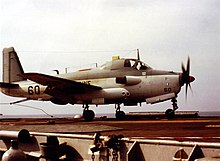INS Vikrant (R11) (Hindi: विक्रान्त) (formerly HMS Hercules (R49)) was a Majestic class aircraft carrier of the Indian Navy. She played a key role in enforcing the naval blockade on East Pakistan during the Indo-Pakistan War of 1971.
India purchased the INS Vikrant from the United Kingdom in 1957. Upon her completion in 1961, she was commissioned as the firstaircraft carrier of the Indian Navy. After a distinguished service, she was decommissioned in January 1997. She has since been preserved as a maritime museum in Cuffe Parade, Mumbai.
INS Vikrant was ordered as the HMS Hercules (R49) by the Royal Navy. She was laid down on 12 November 1943 by Vickers-Armstrongon the River Tyne. She was launched on 22 September 1945. However, with the end of World War II, her construction was suspended in May 1946 and she was laid up for possible future use.
In January 1957 she was sold to India. She was towed to Belfast to complete her construction and for modifications by Harland and Wolff. A number of improvements to the original design were ordered by the Indian Navy, including an angled deck, steam catapults and a modified island.
The Indian Navy considered buying her sister HMS Leviathan (R97) as well and commissioning her as the INS Vikram (R13). However, this never materialized due to budgetary concerns.
The Vikrant, as seen from HMS Centaur - March 1962
Hawker Sea Hawk
The Alize Anti-Submarine Aircraft
INS Vikrant (R11) was commissioned into the Indian Navy by then Indian High Commissioner to the United Kingdom, Vijayalakshmi Pandit on 4 March 1961 in Belfast. The name Vikrantwas taken from Sanskrit vikrānta meaning "stepping beyond", i.e. "courageous" or "bold". Captain Pritam Singh was the first commanding officer of the carrier.
The Vikrant's initial air wing consisted of British Hawker Sea Hawk fighter-bombers and a French Alize anti-submarine aircraft. On 18 May 1961, the first jet landed on her deck piloted by Lieutenant (later Admiral) Radhakrishna Hariram Tahiliani. She formally joined the Indian Navy's Fleet in Bombay on 3 November 1961, when she was received at Ballard Pier by Prime Minister Jawaharlal Nehru.
During the Indo-Pakistan War of 1965, Pakistan reported that it had sunk the Vikrant.However, at the time the ship was in dry dock undergoing modifications.
In June 1970, the INS Vikrant was at the Naval Dockyard for repairs due to a crack in a water drum of one of the boilers powering her steam catapult. Unable to procure a replacement drum from the United Kingdom due to an embargo, Admiral Sardarilal Mathradas Nanda ordered the routing of steam from her forward machinery to the steam catapult to bypass the damaged boiler. This repair enabled her to launch both the Sea Hawks as well as the Breguet Alizé, although she lost some cruising power. In March 1971, she was put through trials to test the fix. These modifications turned out to be valuable, enabling the Vikrant to enter combat despite the cracked boiler against East Pakistan in the Indo-Pakistani War of 1971.
Stationed off the Andaman & Nicobar Islands along with frigates, INS Brahmaputra (1958) andINS Beas (1960), the Vikrant redeployed towards Chittagong at the outbreak of hostilities.Based on Naval Intelligence reports that the Pakistan Navy intended to break through the Indian Naval blockade using camouflaged merchant ships, the Sea Hawks struck shipping in theChittagong and Cox's Bazar harbors, sinking or incapacitating most ships in harbor. On the morning of 4 December 1971, the eight Sea Hawk aircraft on the Vikrant launched an air raid on Cox's Bazar from 60 nautical miles (110 km) offshore. On the evening of 4 December, the air group struck Chittagong Harbor. Later strikes targeted Khulna and Port of Mongla. A PTI report of 4 December read, "Chittagong harbour ablaze as ships and aircraft of the Eastern Naval Fleet bombed and rocketed. Not a single vessel can be put to sea from Chittagong." Air strikes continued until 10 December 1971 with not a single Sea Hawk lost.
The Pakistan Navy deployed the submarine PNS Ghazi to specifically target and sink the INS Vikrant. However, the Ghazi sank off Visakhapatnam harbor likely due to depth charges by INS Rajput (D141). During the war, the crew of Vikrantearned two Mahavir Chakras and 12 Vir Chakras.












0 comments:
Post a Comment